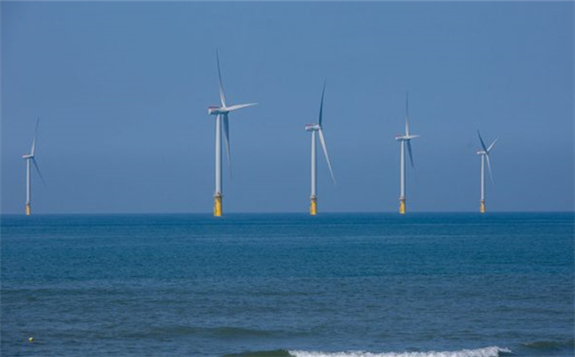GWEC anticipates that by 2030 more than 205 GW of offshore wind power capacity will be added globally, including at least 6.2 GW of floating offshore wind turbines. The figure represents a growth of 15 GW over the estimates that GWEC Market Intelligence itself made before Covid-19, demonstrating the resilience of the sector to play an important role in driving the energy transition and the Ecological recovery. The World Report on offshore wind energy was released this week by GWEC and ranks this sector as a crucial contribution of clean energy to the planet.

The world market for offshore wind farm energy has grown at a rate of 24% every year since 2013. 29.1 GW are generated in the world and the forecast is that in 2030 we will achieve 234 GW offshore wind turbines.
These are the figures and forecasts produced by the second edition of the World Report on offshore wind energy, prepared by the World Wind Energy Council and sponsored by the company MHI Vestas.
The report not only proves the growth of this energy in the world but its resistance to the new world scenario posed by the COVID-19 pandemic.
Ben Backwell, CEO of GWEC, stated that ‘Offshore wind energy is truly going global as governments around the world recognize the role that technology can play in initiating the post-Covid-19 economic recovery through the large-scale investment, job creation and economic development of coastal communities. ‘
Backwell notes that ‘every installed gigawatt of offshore wind turbines avoids 3.5 tonnes of CO2, making it the most efficient large-scale technology available to avoid carbon emissions and displace fossil fuels in many areas geographical ”.
Backwell said: “In the next decade we will see emerging marine markets such as Japan, Korea and Vietnam go into full deployment, and we will also see the first marine turbines installed in a number of new countries in Asia, Latin America and Africa.”
GWEC is committed to continuing to collaborate with the World Bank’s ESMAP (Energy Sector Management Assistance Program) to bring useful information to 20 emerging markets by September 2020.
Europe is the largest market for this technology, since 75% of the total world installations are found on the continent. The report details that it will continue to lead the sector, with an ambitious 450 GW target by 2050 driven by installations in the UK, the Netherlands, France, Germany, Denmark and Poland, among others.
North America only has 30 MW of offshore wind capacity in operation, but the GWEC foresees an acceleration in this clean energy race and by 2030 it could have 23 GW, generated by the United States.
As for Asia and the Pacific, China is the leading country: 52 GW is expected to be installed in 2030. Taiwan is aiming for the second position, with a target of 5.5 GW by 2025 and another 10 GW by 2035. As for Vietnam, Japan and South Korea its forecasts are 5.2 GW, 7.2 GW and 12 GW of offshore wind capacity, respectively.
Regarding the future of the industry, Feng Zhao, Strategy Director at GWEC, underlined: “As the market continues to grow, industry innovations such as floating offshore wind power, larger and more efficient turbines, as well as solutions Power-to-X will continue to open new doors and markets for the sector and place the marine industry in an increasingly important position to drive the global energy transition.
The report also includes past years’ experiences in support plans, industrial development and job creation, grid connection, cost reduction, supply chain, health and safety to boost further growth of the global market for offshore wind energy.